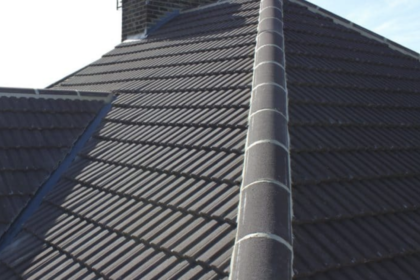 What Is Lead Roofing and Can It Be Dangerous?
What Is Lead Roofing and Can It Be Dangerous?
There’s been a good deal of publicity over the past few decades about how toxic lead is. This is, after all, why it was removed from petrol, and even so dangerous levels of lead pollution have been found still present in the air in some urban areas, twenty years after it was phased out. It might surprise you, therefore, to find that lead may well form part of your roof. Why is lead roofing used, and could it be dangerous?
Lead Roofing
How Is It Used for Roofing?
Lead has been used for roofing for centuries, especially on buildings like churches, where its flexibility means it can be adapted well to complex architectural features. This normally takes the form of lead sheeting laid over the joists.
For ordinary modern roofs, however, lead is most often used to seal places where two parts of roof or masonry meet. This could, for instance, be at the bottom of a valley in the roof, but most often lead is used for flashing where the roof meets a wall or a structure like a chimney stack.
Why Use It for Roofing?
Lead has a number of advantages for roofing. As mentioned, it’s flexible and malleable, making it easy to fit around features. The same quality means that it isn’t vulnerable to temperature swings. Because it easily expands in the heat and contracts in the cold, it’s unlikely to crack like many other materials.
This makes lead a very durable material, lasting up to three times as long as alternative materials. It’s also fireproof, but most importantly it’s very effective both for waterproofing and for insulation. In addition, it’s one of the most recyclable of all materials.
Lead’s main drawback is that it’s quite heavy. This means that, if it’s not fitted correctly, lead flashing can crack other materials — one of several reasons why fitting it should be left to experts.
Could Lead Be Dangerous For Roofing?
Lead is a highly toxic metal and can lead to serious health problems, as well as developmental issues for children. However, the danger normally comes from either touching lead or breathing in particles. With your lead roofing high above you, the risk is almost non-existent.
A more problematic issue is that the run-off water from your roof can wear away the lead and become contaminated. As long as the run-off goes straight down the drains, this shouldn’t be a problem, but it’s as well not to use run-off water for the garden if you have lead roofing.
The biggest danger with lead roofing is actually working with the material. Roofers working with lead need to wear a substantial amount of protective gear and follow strict safety rules. This means that lead roofing should only be installed by professional roofers who are used to the material. Give us a call if you want to know more about using lead as part of your roofing.









